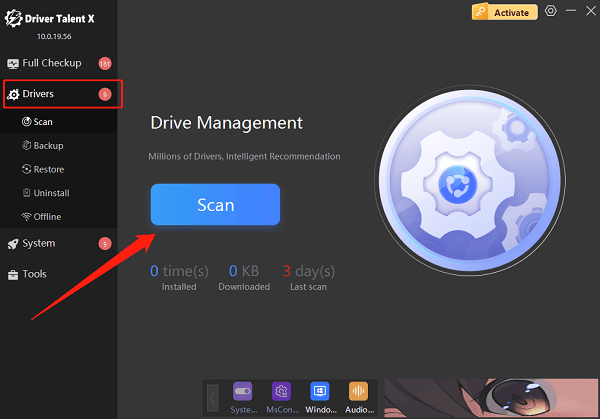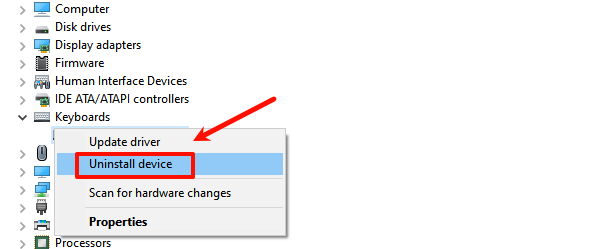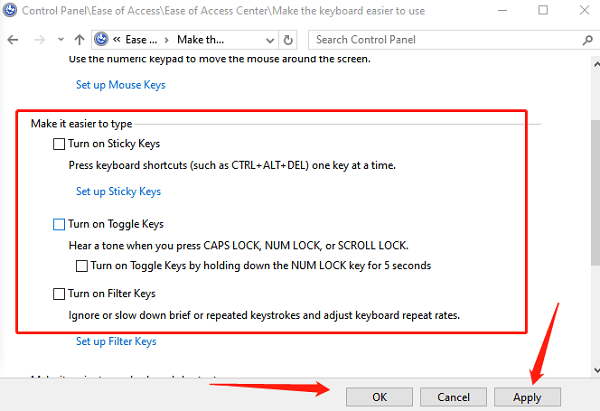While using a Windows system, many users may encounter keyboard issues such as unresponsive keys or inability to type, which can seriously impact daily productivity.
This article analyzes the common causes of keyboard malfunctions and offers several practical solutions to help you quickly restore keyboard functionality.
I. Symptoms of a Non-Functional Keyboard
Unable to type or keys don't respond.
Some keys stop working (e.g., "Ctrl", "Enter").
Keyboard works in BIOS but stops working after booting into Windows.
External keyboard is not recognized.
Keyboard lights (such as Num Lock) don't turn on.
II. Common Causes of Keyboard Malfunctions
Driver issues: Missing, corrupted, or incompatible keyboard drivers.
Hardware connection faults: Loose keyboard cable, damaged USB port, or faulty keyboard.
System misconfigurations: Disabled keyboard, incorrect input method, or enabled accessibility features.
Third-party software conflicts: Antivirus, keyboard control apps, or system optimization tools interfering with keyboard functionality.
Windows update errors: Driver or configuration problems after system updates.
III. How to Fix Keyboard Not Working on Windows
Method 1: Check Physical Keyboard Connection
Try a different USB port to rule out port failure.
Test with another keyboard to identify if the current one is faulty.
Connect the current keyboard to another PC to verify if it works.
For wireless keyboards, check batteries and Bluetooth pairing.
Method 2: Update Keyboard Driver
Driver issues are a common cause of keyboard failure. It's recommend to use Driver Talent X, a professional driver manager that automatically detects, downloads, and installs the most compatible drivers for your system.
Click the "Download" button to get the latest version of Driver Talent X.
Launch the software and select the "Scan" option under the "Drivers" tab.

After scanning, find the keyboard driver and click the "Upgrade" button.
Restart your computer to apply changes.
Method 3: Check Device Manager
Press Win + X, then select "Device Manager".
Expand the Keyboards section and check for yellow warning icons.
If any exist, right-click the device and choose "Uninstall device".

Restart your system to let Windows reinstall the driver automatically.
Method 4: Disable Accessibility Features
Some accessibility settings may interfere with keyboard behavior:
Go to Control Panel > Ease of Access Center.
Click "Make the keyboard easier to use".
Uncheck options like "Turn on Filter Keys", "Sticky Keys", etc.

Apply the changes and restart your computer.
Method 5: Run Keyboard Troubleshooter
Go to Settings > Update & Security > Troubleshoot.
Click "Other troubleshooters" and find "Keyboard".
Click "Run the troubleshooter" and follow the on-screen instructions.

Method 6: Check Updates or Use System Restore
If the issue started after a recent Windows update, go to:
"Settings" > "Windows Update" > "Update History" > "Uninstall Updates".
Alternatively, use "System Restore" to return to a state when the keyboard was working.
IV. Frequently Asked Questions (FAQ)
Q1: My external keyboard isn't detected, but the touchpad works.
A: The USB port may be faulty or the keyboard driver isn't installed. Try another port or update the driver.
Q2: The keyboard works in BIOS but not in Windows.
A: This suggests no hardware issue. Focus on checking the driver and Windows settings.
Q3: My wireless keyboard suddenly stopped working.
A: Check the battery, power switch, and Bluetooth connection. Try re-pairing or replacing the batteries.
Keyboard issues in Windows can arise from various causes, such as driver problems, hardware failures, or system misconfigurations. By following the solutions in this guide, you can troubleshoot and resolve most keyboard-related problems quickly.
To avoid future issues, regularly update your system and drivers. If problems persist, consider contacting technical support or the keyboard manufacturer for further assistance.
